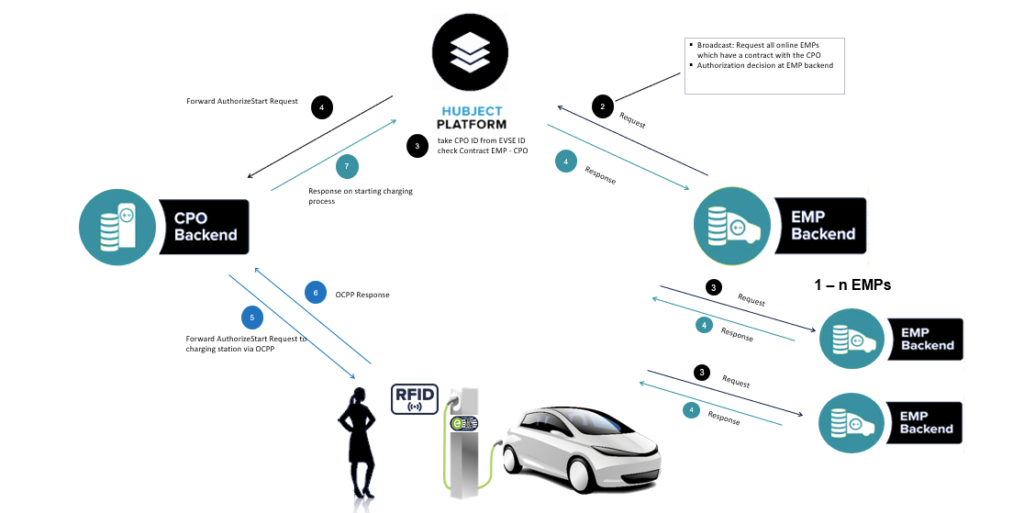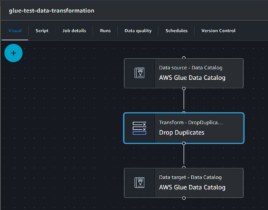
Driving the Future: How API Integration is Revolutionizing EV Roaming

Table of contents
You've got questions?
Contact us
Understanding API integration in the context of EV roam
The world of electric vehicles (EVs) is rapidly evolving, and with it comes the need for seamless connectivity and interoperability. This is where API integration plays a crucial role. API, or Application Programming Interface, allows different software applications to communicate with each other, enabling the exchange of data and functionality. In the context of EV roaming, API integration is revolutionising the way EVs are charged and managed across different networks.
One of the key benefits of API integration in the EV industry is the ability to provide a seamless charging experience for EV owners. Gone are the days of needing multiple charging cards or apps to access different charging networks. API integration allows EV drivers to have a single point of access, where they can view and pay for charging services across various networks. This not only simplifies the charging process but also enhances the user experience, making EV ownership more convenient and accessible.
The role of roaming platform
When it comes to API integration in the EV industry, one name stands out: Hubject. Hubject is a global platform that connects different stakeholders in the EV ecosystem, including charging network operators, e-mobility service providers, and automotive manufacturers. Through its innovative API integration solutions, Hubject is driving the future of EV roaming by enabling seamless interoperability between different charging networks.
Hubject’s API integration allows EV drivers to access charging services across multiple networks using a single app or card. This eliminates the need for drivers to sign up for multiple accounts or carry multiple cards, making the charging process much more convenient. Additionally, Hubject’s API integration enables real-time data exchange between charging network operators and service providers, ensuring accurate billing and reliable charging services.
This is based on the use of a protocol called Open InterCharge Protocol (OICP) documented on GitHub (https://github.com/hubject/oicp/tree/master). By making information about the protocol available as open source, anyone can download the documents for free and do an inspection to assess what changes need to be made to their network in order to perform proper integration through the API.

The impact of API integration on EV charging infrastructure
API integration is not only benefiting EV drivers but also having a significant impact on the overall EV charging infrastructure. By enabling interoperability between different charging networks, API integration promotes the growth of the charging infrastructure and encourages the adoption of EVs. With API integration, charging network operators can expand their reach and offer their services to a wider customer base, ultimately accelerating the transition to electromobility.
Moreover, API integration allows for the optimisation of charging infrastructure. By accessing real-time data on charging demand, network operators can better understand usage patterns and plan the deployment of charging stations accordingly. This helps to ensure that charging infrastructure is strategically located, reducing the likelihood of congestion and improving the overall efficiency of the charging network.
Improving the user experience through API integration
One of the key advantages of API integration in the EV industry is the ability to enhance the user experience. With API integration, EV drivers no longer need to worry about the compatibility of their charging cards or apps with different networks. They can simply plug in their EVs and start charging, regardless of the charging network they are connected to.
API integration also enables EV drivers to access real-time information on charging station availability and status. This prevents unnecessary trips to occupied or malfunctioning charging stations, saving time and frustration. Additionally, API integration allows for remote monitoring and control of charging sessions, providing EV drivers with greater control over their charging experience. It is important to remember that the development of new industries does not happen overnight. The current and widely used internal combustion cars have also undergone evolution over more than 100 years. It was time that made gas stations, three-point seat belts or airbags popular. Now such time is what the EV needs.

Leveraging API integration for seamless cross-border EV travel
API integration is not limited to national borders. It has the potential to revolutionise cross-border EV travel by enabling seamless roaming across different countries. With API integration, EV drivers can travel across borders without the need for multiple charging cards or apps. They can access charging services in foreign countries using their existing account, making international EV travel more convenient and accessible – just the same way we do with our mobile phones connectivity.
The future of API integration in the EV industry
API integration is still in its early stages in the EV industry, but its potential is immense. As the adoption of EVs continues to grow, the demand for seamless connectivity and interoperability will only increase. API integration will play a crucial role in enabling the expansion of the charging infrastructure and ensuring a seamless charging experience for EV drivers. Therefore, it is important to start this process as early as possible. Even at the stage of designing your own network or selecting a software provider, it is important to consider the process of integration with other networks. Postponing this may make it difficult or even impossible to carry out the integration.
That is one of the crucial software requirement we always discuss with our clients at i4B.
In the future, we can expect to see even more advanced API integration solutions, such as smart grid integration and demand response capabilities. These advancements will further optimise the charging process, ensuring that EVs are charged at the most cost-effective and energy-efficient times. Additionally, API integration will enable innovative services, such as vehicle-to-grid integration, where EVs can not only consume energy but also feed it back into the grid during peak demand periods.

Challenges and considerations of implementing API integration for EV roaming
While API integration offers many benefits, there are also challenges and considerations that need to be addressed. One of the key challenges is ensuring data security and privacy. With API integration, sensitive data such as personal and payment information is exchanged between different systems. It is crucial to have robust security measures in place to protect this data and build trust among EV drivers. That’s why it’s important, when building your own network or choosing a software provider, to check that the technologies you use are up to date and to conduct security audits to obtain security certifications. Data security and privacy in this case is a priority.
Another consideration is the standardisation of APIs across different networks. Currently, there is a lack of uniformity in API protocols and data formats, making it challenging for different systems to communicate effectively. Establishing industry-wide standards for API integration will be essential to ensure seamless interoperability and avoid fragmentation in the EV charging ecosystem. The process of establishing standards will take time and work by many organizations, but the foundation of a worldwide network of EV charging stations must be stable, proven and secure. A similar process has been gone through for today’s widespread online transfers, which are now the backbone of the economy. It didn’t happen overnight, and banks and other institutions worked on it for years. In the same way, we are working today to integrate the various networks of EV charging stations.
Exploring other industries benefiting from API integration
API integration is not limited to the EV industry. Many other industries are also leveraging the power of API integration to drive innovation and enhance user experiences. One such industry is the hospitality industry, where API integration allows for seamless booking and reservation experiences across different platforms. Similarly, the healthcare industry is using API integration to enable interoperability between different healthcare systems, improving patient care and data exchange.
In the near future, in addition to the development of electric cars, cars running on other types of fuel, such as a hydrogen car, are likely to be introduced. We already know that the process will be similar, and the experience gained during the development of the infrastructure and network of electric cars can be used during the construction of the infrastructure and network of hydrogen cars. It is not difficult to imagine that within one application we will be able to see not only where there are charging stations for electric cars, but also where to refuel hydrogen cars. Will the future bring hybrid cars that run on both electricity and hydrogen? How convenient it would be then, to have a single app that would allow us to find the right station regardless of what fuel the car uses.
Conclusion
API integration is revolutionising the EV industry by enabling seamless connectivity and interoperability. With API integration, EV drivers can enjoy a convenient and streamlined charging experience, while charging network operators can expand their reach and optimise their infrastructure. Hubject is one of the key players in API integration for EV roaming, is driving the future of electromobility by connecting different stakeholders in the EV ecosystem. As the adoption of EVs continues to grow, the role of API integration will become increasingly important, shaping the future of the EV industry. That’s why you should consider starting integration work with Hubject today with an experienced team!
Your message was successfully sent.
Thank you for contacting us. We will get back to you as soon as possible.




